More Expensive, Less Practical: BMW Debuts Luxury I3 'Urban Suite' at CES
BMW will debut a new version of its very green i3 EV at the Consumer Electronics Show (CES) next week. The compact hatchback has been reimagined for the future — and BMW’s future is one of less usability and much greater expense. You’ll need hired help.
Dealers Forecast Modest Sales Decline in 2020
The National Automobile Dealers Association (NADA) released its annual new-vehicle sales forecast for 2020, estimated a modest decline in U.S. volume. The announcement dropped on Tuesday, citing rising transaction prices as the probable cause. With fewer sedans on the market ( especially among domestic automakers), customers are shifting to crossover vehicles with higher price tags. Fortunately, the United States’ economy has remained roughly as stable as the cost of fuel — avoiding market conditions that normally encourage customers to swap into affordable economy cars or simply hold onto their current ride.
“We expect new light-vehicles sales will come in at 16.8 million units for 2020, roughly a 1.2 percent drop from 2019 sales volume,” NADA senior economist Patrick Manzi explained. “As for 2019, it appears new vehicle sales will best the expectations of most in the industry by topping 17 million units for the fifth straight year.”
Americans Might Not Even Buy 1.4 Million Midsize Cars This Year; Market Share Down By Half Since Recession
Remember the midsize sedan death watch?
When TTAC introduced the series, Americans were still acquiring over 2 million midsize cars per year. That fact, the 2M+ aspect of the segment and the 1M+ nature of the top models, combined with the category’s 12-percent market share, caused many readers to doubt the possibility that any other intermediate sedans would ever bid farewell.
Others have, of course, fallen by the wayside. Joining the long-lost Mercury Milan, Pontiac G6, Saturn Aura, Suzuki Kizashi, Mitsubishi Galant, and Dodge Avenger in that great midsize parking lot in the sky are cars such as the Chrysler 200 and Ford Fusion. The Chevrolet Malibu is not long for this world.
Meanwhile, sales of the remaining midsize cars continue to tank. The notion that America’s midsize segment is a reliable provider of more than 2 million units per year is now cast by the wayside. Americans are likely to purchase and lease fewer than 1.4 million midsize cars in 2019. That’s 15-percent fewer midsize cars than Americans drove home in 2009 during the depths of the Great Recession.
Opinion: A Mustang-inspired EV Spells an End to the Traditional Mustang
Yesterday, TTAC reported on a leaked video (quickly confirmed by Ford) that showed an all-new “Mustang-inspired” model due for debut in November. A sleek, four-door CUV appears on the screen. Highlighted in silhouette, its design represents so many familiar Mustang cues. It’s the Mustang of the future, and it’s a future that will be electric and have four doors.
Infiniti Sales Slump Leaves Brand Stumped
Infiniti’s sales took a tumble in September, dropping 44 percent (43.9 percent, to be exact) compared to September 2018.
Last year, Nissan’s luxury brand sold 12,536 units in September, while just 7,031 units left dealer lots this time around. The brand is also down 16.5 percent over the first nine months of the year.
Bigger picture, the industry has been hit by six months of sales declines in 2019, and all large automakers, Asian or American, were facing large drops (double digits, in many cases) in September. The good news for the industry is that the seasonally adjusted annual sales rate (SAAR) checked in around 17.16 million units across all brands – a healthy number despite the sales declines.
Buy/Drive/Burn: Floaty American Luxury Sedans From 1988
In the late Eighties, American auto manufacturers still sold large, traditional luxury sedans in decent numbers. Their aging sedan consumer base fondly remembered the vinyl and chrome of yesteryear and still relished brougham-style accoutrements.
Up for consideration today are three comfortable, luxury-oriented sedans from 1988. It’s hard to lose here.
QOTD: Level-set for the C8 Vette?
Between 1953 and a few weeks ago, the Chevrolet Corvette stuck to a very specific formula: Engine at the front, driven wheels at the back. With the debut of the 2020 C8 Corvette, all of that changed. Today we want to find out what you think about the metamorphosis of an iconic sports car nameplate.
QOTD: The Worst Examples of Automotive Cooperation?
Automakers are keen to pursue partnerships with one another when it means saving money via economies of scale, or when it supports an established corporate structure. Whether it’s in the form of some basic components-sharing or a more intensive joint venture, today we want to hear about the worst possible examples of automotive cooperation.
India's Auto Market Also Sucks
We’ve spent the better part of 2019 describing how unwell the automotive markets of China, Europe and North America have become, which might accidentally lead some to believe that most other markets are performing better. While Brazil expects continued expansion and a presumably healthy 2019, its rosy outlook is unique.
Japan saw a modest decline in registrations (just 0.3 percent) through the first half of the year, while Russia recorded slippage of 2.4 percent. But figures from India were far worse. In fact, the country is looking at the biggest sales slump in almost twenty years. Early estimates suggest passenger vehicle registrations may have plunged as much as 30 percent in July, after falling 17.5 percent just a month earlier. Most annual outlooks forecast a double-digit decline in overall sales.
OEMs Report July's Auto Sales … 'cept for Detroit
It’s tough to gauge the state of car sales in America on a monthly basis these days. The entirety of the Detroit Three have moved to a quarterly reporting system, leaving a gap the size of a ‘70s land yacht in this month’s numbers.
Still, we press on. The remaining manufacturers are still reporting each month — for now — which gives us at least a partial picture as to the lay of the land. Many brands enjoyed a month-over-month increase in July but the year-to-date results are a bit of a mixed bag.
QOTD: Alternative History of Avoiding Disastrous Consequences?
Last week we played a round of Armchair Alternative History where we discussed missed opportunities in the automotive industry. Conversation focused on actions automakers didn’t take when they should’ve.
Today is round two. Let’s go back and erase things that actually happened.
QOTD: How Do You Solve a Problem Like Nissan?
The news of Nissan’s recent financial trouble brought attention right where it needs to be: on lackluster product. In our most recent reporting regarding Nissan’s sales woes, I was asked in the comments whether I had any ideas for improvement. Well that got me thinking (and worked up), and it turns out I do have ideas, and they fall into three major categories.
U.S. Auto Sales Continue to Decline, July Outlook Dim
We’re now in the seventh month of declining automotive sales in the United States. However, global sales haven’t fared any better. China posted its worst-ever monthly decline more than once this year with specific brands claiming as much as 70-percent slump in sales through the first half of 2019. Things are also going badly in Europe and have been for quite some time, with June playing host to some exceedingly bad metrics.
In fact, North America has had it comparatively good since its troubles hadn’t become truly persistent until the start of this year and the monthly dip rate has been been less severe. That does not, however, make the situation in the U.S. sunshine and roses.
QOTD: Alternative History of Missed Automotive Opportunities?
Today marks the first entry into a two-part Question of the Day series where we’ll step back in time. The purpose of the journey? To fix the mishaps committed by automakers. First up are the missed opportunities.
Chinese Auto Market Still Sour, Dealers Discount Old Stock
Automotive retail sales in China rose slightly last month, representing the first uptick in volume over the last year, according to Bloomberg. But those gains were the result of a nationwide fire sale of backed-up inventory that dealers were tired of seeing clutter up their lots. Officially, the China Association of Automobile Manufacturers (CAAM) says the new vehicle market still kind of sucks.
For June, wholesale deliveries of new passenger vehicles fell 7.8 percent to 1.73 million units. That’s twelve straight months of negative growth.
The Pettiness of Pickup Sales
With Ram having surpassed Chevrolet as North America’s number two truck brand, automotive outlets everywhere rushed to report on it — we sure did.
Unfortunately, General Motors hasn’t been fond of the framing used to discuss the matter. Tough cookies, right? Well, the situation is pretty nuanced and we should always strive to be thorough. GM officially still trumps Fiat Chrysler in terms of overall full-size pickup sales, thanks to the one-two punch of the Chevy Silverado and GMC Sierra. And the company is also keen to point out that Ram’s volume has been inflated by the previous-generation 1500 being sold alongside the new version as a “Classic” model.
GM feels that this has made FCA’s win less legitimate and takes umbrage with the media sensationalizing the news as it prepares to totally destroy Ram by making a “massive move in full-size pickups” that will absolutely blow the doors off anything you could have possibly imagined. Insane!
Sales Roundup: Ram Beats Up On Chevy, Korean Brands Rake In Dough
Surprising exactly no one, Americans continue to snap up light trucks and SUV apace, driving manufacturers like Subaru to month-over-month gains in June. In fact, the Exploding Galaxy is continuing a remarkably torrid sales streak, chalking up 91 consecutive months of year-over-year growth. The beauty of all wheel drive, indeed.
That rumbling you hear are Chevrolet execs jumping over furniture to try and comprehend their sudden relegation to third place in the perpetual fight for pickup truck supremacy. Through to the end of June, Ram has trounced Silverado to the tune of about 50,000 units.
Ooooh; don’t you hate that burning smell?
Rare Rides: A Pristine 1978 Oldsmobile Cutlass Salon, Shift-It-Yourself Edition
Hearing the Cutlass name inspires visions of 442, of color-key rally wheels, or perhaps thoughts of tacky aftermarket ruination and glittery paint.
This grey fastback sedan doesn’t often come to mind, but perhaps it should. Presenting the 1978 Oldsmobile Cutlass Salon. Likely, Olds called it Salon because you can fit big hair into it.
Buy/Drive/Burn: 2019 American Sports Cars, Ace of Base Edition
Buy/Drive/Burn returns this week with three American sports cars in their most basic, purest form. The Big Three are represented here, and they don’t get any cheaper than this. No options or fripperies are allowed, and one must receive the Buy.
Start your (small) engines — it’s sports car time.
QOTD: Graceful Nineties Aging From Asia?
The past couple of Wednesday editions of Question of the Day have been full-on Nineties design in their subject matter. First, we considered American marques, before moving on last week to the European set. This week we’ll do it once more, talking about Asian car designs from the Nineties that still hold up today.
Break out your soap bar memories.
Buy/Drive/Burn: Expensive Trucks You Won't Use for Truck Things
Today’s truck trio includes three very expensive rigs that aren’t likely be used for hauling duties or any other truck-type responsibilities. And that’s a good thing, because they’re loaded up on equipment and leather, and covered in nice metallic paint. Which nice truck gets used as kindling? Let’s find out.
QOTD: Your Least Favorite Front-drive Nineties Ride?
Last week, Steph penned a QOTD where he let commenters loose on front-drive American cars made between 1980 and 2010. The ask was to pick a favorite from the wide selection; one you’d buy today as new.
This week we’re going to take the opposite tack and talk about the front-drive car you like the least.
2019 Mazda 3 AWD First Drive Review - Holding It All Down
Earlier this year, Mazda showed off its all-new 3 sedan in Los Angeles. The new compact’s intent is to impress a revised, upscale image on the brand. While the 3 delivered in quality, overall refinement, and driving enjoyment, it managed only middling marks with regard to power.
Now, Mazda has upped its game with a more stylish hatchback variant and the additional capability of an all-wheel drive system. But do style and substance mesh in the more expensive hatchback? We went back to California to find out.
QOTD: Most Overpriced Non-luxury Vehicle of the 1990s?
For the past couple of weeks, Wednesday’s QOTD posts have asked a simple question: What was the most overpriced non-luxury vehicle of a given period of time? The first inquiry dealt only with 2019 vehicles, and last week we covered the 2000s — where I picked on the overpriced, retro Ford Thunderbird. Many of you thought I was wrong (I wasn’t). Today, we’ll head back to the decade we all like to discuss — the one that’s popular right now with youths.
It is, of course, the 1990s. I’m already wearing my blazer and shoulder pads.
QOTD: What's the Most Overpriced Non-luxury Vehicle in 2019?
Though much of the luxury vehicle segment is immune from the depressingly practical concept of “good value,” the less aspirational vehicles of the proletariat are not so fortunate.
Today we discuss overpriced non-luxury vehicles for sale in 2019.
Where Your Author Eliminates a Couple of Coupes
In an introductory post last week, I detailed a couple of cars I was considering as a replacement to my decade-old Infiniti M. The comments (some filled with unusual anger) prodded me to add another car to the list.
A week later, I can tell you that two of those former options are absolutely out of the question.
QOTD: A Solution for FCA's Future?
A dated product lineup, questionable fuel economy across the board, a general need for some reworking. These are all issues with Fiat Chrysler’s offerings in North America. Today we’ll try and come up with some solutions.
QOTD: Out of Touch, or Out of Time?
On Monday, Matthew Guy asked all of you to nominate vehicles that were ahead of their time. Those rare occasions where vehicles anticipated the desires of consumers, even before said desires were fully formed. Today, we flip it around and talk about Hall and Oates lyrics vehicles which were out of touch or behind the times, even when new.
QOTD: Searching for Value Among the Utilities?
Don’t let the title confuse you; we’re not discussing how to save money on your electric bill. Today’s QOTD hopes to find utility vehicles of value, in both the SUV and CUV categories. Put on your thinking caps.
For What It's Worth, You'll Be Able to Get Your Hands on a 2020 Ford Fusion
Stop the presses. Ford’s Fusion sedan, a member of the passenger car crowd Ford sentenced to death last year, will at least outlive its non-Mustang stablemates.
While American-market Focus and C-Max production has already dried up, followed soon by the Taurus and Fiesta, Ford was never clear on when exactly the Fusion midsizer would bite the dust. The exact date of its impending death remains a mystery, but there’s now assurances from Ford that Fusions will continue rolling into dealers until at least the 2020 model year.
Hyundai, While Not Pulling Up Stakes in the Car Market, Knows Where Its Future Prosperity Lies
Ignore that slight dip in U.S. sales volume last year, Hyundai Motor America’s chief operating officer, Brian Smith, says. It’s just because the automaker stopped flinging so many cars at rental agencies.
Barring some unexpected disaster, 2019 should see the brand’s sales climb in the U.S., Smith said, adding that Hyundai’s not planning on pulling a Ford or GM anytime soon. Honest-to-God cars will live on in Hyundai’s lineup, but utility vehicles will continue earning an ever greater share of its total volume. No surprise, what with a big ‘ute on the way.
While the new Kona and upcoming Palisade will no doubt swell the ranks of Hyundai light truck buyers, Smith feels fans of the company’s Santa Cruz pickup concept will be pleasantly surprised by what the brand has in store for them.
QOTD: Manufacturer Cooperation - Cash Saver, or Corrosive Cancer?
Cooperation and borrowing between auto manufacturers is nothing new, and it isn’t always a bad thing. For example, look what happened in the 1980s when Lincoln borrowed a BMW inline-six turbodiesel for its Continental Mark VII luxury coupe. Oh, maybe that’s not the best example. But two events this week have led to a couple of new examples for us to ponder.
How do you think these cooperative automotive projects will fare?
Under Fire From Multiple Foes, Jaguar Land Rover to Cut 4,500 UK Workers
For now, Tata-owned Jaguar Land Rover isn’t saying whether any of its British plants will close as a result of the automaker’s cost- and job-cutting spree, nor whether we’ll see a shedding of models from its portfolio. Many would argue there’s some Jags in need of cutting.
With global sales falling 4.6 percent in 2018, the automaker claims the next phase of its “Charge and Accelerate” transformation plan will leave 4,500 UK workers out of a job.
Market Share Madness: Which Brands Earned a Larger Slice in 2018?
When you’re already big, it’s hard to notice much of a change in any direction. This goes as much for the human body as it does for auto sales. So it’s no surprise to see that, of the roughly 17.3 million vehicles sold in the U.S. last year, the amount claimed by the Detroit Three didn’t budge all that much from the previous year.
Combined, the three domestic giants took a 44.4 percent slice of the U.S. auto pie, which actually represents a 0.1 percent increase from a year earlier. Combine Tesla’s volume into the American fold, and the stars and stripes collected 45.1 percent of U.S. buyers, or 0.6 percent less than in 2013.
In 2018, General Motors and Ford both ceded ground to a rising Fiat Chrysler, proving that the real action occurs at a lower data level. So, which automakers earned a larger helping of your collective buying love last year?
Next Ford EcoSport to Become More Fiesta-like: Report
Once the Fiesta drains from North American Ford lots following its May 2019 discontinuation, it’s up to the company’s subcompact EcoSport crossover to draw entry-level buyers into the Blue Oval fold.
Imported from India, the second-generation EcoSport, which first arrived on these shores at the dawn of 2018, kicked off for the 2013 model year overseas, making the EcoSport anything but all-new. Luckily, there’s a replacement in the works.
Rebirth, or Looming Fizzle? The Station Wagon Had a Pretty Good Year in 2018
In the absolutely superb 1949 war film Twelve O’Clock High, a doctor stationed at a U.S. Army Air Force base in WW2 England uses an interesting comparison when describing a character’s mental breakdown.
“Have you ever seen a light bulb burn out? How bright the filament gets right before it breaks?”
A similar phenomenon could be at work in a certain vehicle niche, one which gets more press than actual sales warrant. The lowly, reviled, and suddenly revered station wagon, now referred to in terms meant to dispel the stodgy family hauler image of decades past.
Losers and a Few Winners: Here's the Cars That Bucked the Trend in 2018
Don’t worry, it isn’t a long list. You won’t be here all day. While the industry coasted to a surprising, yet slight, year-over-year volume increase in 2018, automakers can’t thank America’s desire for traditional passenger cars for eking out a win. Light trucks carried the day, with car sales plunging to new lows. Industry-wide, U.S. car sales sank 13.1 percent in 2018, pushing their share of the market to just over 31 percent.
Within this soup of sales, a handful of conventional passenger cars exist that held their ground, straining mightily against gale force headwinds. Maybe it’s a futile battle, but it’s worth noting these survivors.
UPDATED: Chevrolet Sonic Dead In Canada, Report Claims
As our previous story detailed, new car buyers are leaving the passenger car market in droves, so it’s not surprising to see automakers getting up and leaving the party. General Motors capped off 2018 by announcing its intention to drop six car models, leaving the fate of its remaining sedans and hatches in question.
North of the border, it seems a seventh model has disappeared before the other six even got a chance to get their coats and boots on. According to GM Authority, citing multiple sources familiar with GM’s operations, the Chevrolet Sonic’s life has come to an end in Canada. How long will it last in its home country of the United States?
A Decade After the Recession (and the Car's Last Hurrah), Light Trucks Continue Gaining Ground
Ten years of lost time has a way of diminishing past events, even one so extreme as the global financial meltdown of 2008-09. It also pushes aside memories of a lot of vehicles that still lingered on the market a decade ago.
At the time, the U.S. economy found itself in freefall. Unemployment rose like a Saturn 5 rocket bound for lunar orbit, gas prices spiked as oil suddenly gained the value of a icy cold canteen on a desert island, and auto sales tanked like Lindsay Lohan’s career. Trucks and SUVs, which were gaining ground throughout the 2000s, ceded territory to passenger cars as the overall industry shed 3 million sales in 2008. The following year brought the worst of it, followed by a steady climb out of the depths. Happier days, just not for traditional passenger cars.
What a difference a decade makes.
Autos In America: A 2018 Year-end Sales Roundup
Most manufacturers were awash in red by the end of 2018, either from the ink on their ledgers or the rose-colored glasses they were wearing while trying to assure themselves that all was well. Ford, GM, Honda, Hyundai … all ceded ground over the last twelve months.
Those seeking the brightest light in 2018 need look no further than our own backyard. Fiat Chrysler climbed the sales chart in a big way. Predictably, that charge was led by Jeep. The numbers put forth by the Trail Rated brand did hold one very surprising statistic, however.
Ford Starts Off the New Year by Pissing Us Off
Are there fits of childlike, fists-clenched glee occurring in the Glass House right now? Quite possibly, and not just because someone brought a scooter into the building.
Don’t say we didn’t predict it. Ford, following in the footsteps of rival General Motors, says it plans to switch to quarterly sales reporting in 2019. While this move would even out the monthly spikes and troughs caused by fleet timing, it ends up meaning less data available to journos and the public.
Chevrolet Volt's Discontinuation Leaves Battery Plant Employees Out of a Job
The vehicle they provide batteries for has less than three months to live, and this week brought news to 50 workers at General Motors’ Brownstown Battery plant that their positions are even more short-lived. In a filing with the state of Michigan, GM said it will cut 37 hourly and 13 salaried workers at the Detroit-area facility, adding an extra dollop of job losses to the mass culling announced late last month.
If the idea of owning a plug-in hybrid with real electric range tickles your fancy, your time’s running out fast.
Toyota Expects a Quarter of Prius Customers to Choose AWD-e, but 25 Percent of Prius Is Not What It Used to Be
As America’s new vehicle market shifts to vehicles with four driven wheels, greater ride height, and dog-friendly tailgates, it seems more than sensible for the Toyota Prius to take part in some community outreach.
The Prius, America’s 10th-best-selling car just a decade ago, can keep doing the same thing over and over again while expecting different results. Or, the Prius can make a significant change – via available “independent electric, magnet-less rear motor” – to offer all-wheel drive, one of the feature sets that’s drawing car buyers away from cars.
And that’s exactly what Toyota has done for the otherwise refreshed 2019 Prius ( reviewed last week by our own Matt Posky). In a manner of speaking, Toyota expects big things from the Prius AWD-e: 25 percent of Prius customers, to be precise.
But one-fourth of all Prius volume is not what it used to be. In fact, it’s a far cry from what it used to be. A mere fraction of what it used to be. One-quarter of all Prius volume will make the Prius AWD-e barely more common than the Alfa Romeo Stelvio.
The Toyota Tacoma Is Now Much More Than the Top-Selling Midsize Truck – It's Now One of America's Best-Selling Vehicles, Full Stop
One year ago, the Nissan Altima, Jeep Grand Cherokee, Nissan Sentra, Toyota Highlander, and Ford Fusion were all significantly more popular than the Toyota Tacoma. The Altima, for example, sold 32-percent more often than the Tacoma, which was generating record volume in 2017.
Fast forward one year, however, and the Tacoma is operating at an entirely different level. It now outsells the Altima, Grand Cherokee, Sentra, Highlander, and Fusion, and by large margins in some cases. To say the Tacoma is America’s best-selling midsize pickup truck would be to wildly understate its success. To say the Tacoma is America’s fourth-best-selling pickup truck would be to minimize its playing field.
Through the end of November 2018, the Tacoma now ranks among America’s 15 best-selling vehicles outright. This is not a cult following. Calling it a Taco doesn’t reserve your place in an exclusive club. You now see enough of them in the run of a day to easily spot the differences between a TRD Sport, a TRD Off-Road, and a TRD Pro.
The Toyota Tacoma is now mainstream.
As Plant Preps for Downtime, America's Grand Caravan Love Appears Unshakeable
The only minivans coming out of Detroit these days aren’t actually rolling out of Detroit, but a plant a stone’s throw from the Detroit River, on the Canadian side. Fiat Chrysler’s Windsor Assembly Plant, home to the Chrysler Pacifica and Dodge Grand Caravan, will go dark for two weeks starting on New Year’s Eve, presumably to manage inventories.
Short-lived shutdowns are commonplace at the plant, where workers assemble one of the newest and undoubtedly the oldest minivans on the market. The latter vehicle, while likely not having much of a future, certainly has a fan base. It’s not giving up on the model, and sales figures show it.
Russians Find the Ford EcoSport Overpriced: Report
Russia, a large country covered mostly in taiga forest and tundra, still loves the Lada 4×4 (née Niva) four decades after its launch, but Ford’s EcoSport isn’t getting the same kind of affection four years after its launch.
Ford’s EcoSport, which burst onto the North American subcompact crossover scene at the beginning of the year, began production at a joint facility in Russia in 2014 but, as that country’s car buying climbs in the wake of a recession, buyers aren’t springing for the EcoSport like they once were. Ford’s throttling back production while claiming regular downtime. Critics blame the model’s price, as well as its diminutive size.
Surely no such critics exist on this side of the Atlantic.
Genesis, a Brand That Barely Exists in Terms of Sales, Begins a Slow Ascent
As we explained earlier this year, the fledgling Genesis brand is going through puberty. The brand’s constantly evolving dealer strategy is now set in stone, or what passes for it in the world of Genesis, but the process of separating the brand from its Hyundai parent won’t take place overnight. There’s dealers to whittle down, licenses to gain, standalone stores to build, and inventory to stock.
It’s a work in progress, but the 2019 models — which now total three — are beginning to find their way to more buyers, Genesis claims. Be patient.
What a Difference a Grille Makes?
Perusing sales data for the month of November, something popped out from the always entertaining Ford Motor Company file. While the company as a whole saw its volume fall 6.9 percent, year over year, last month, Lincoln finished November on a high note — something it hasn’t seen much of this year, Navigator sales notwithstanding.
Compared to the Ford brand’s 7.3 percent YoY drop, the Lincoln brand saw a 3 percent increase. Still down since the start of the year (a trait it shares with the Blue Oval brand), Lincoln’s November sales increase wasn’t just fueled by the hulking Navigator. A new nameplate appeared last month, tacked onto a pre-existing vehicle. Were buyers holding out for a new grille?
GM Betting on Commercial Sales in Bid to Bruise Ford
With passenger cars deserting the ranks, the battle for sales and profit in Detroit will be waged almost solely with trucks. You’ve already seen what General Motors has in store for HD truck buyers, and Fiat Chrysler’s expected to reveal its own alternative to Ford’s Super Duty line before long.
However, as lucrative as half-tons and HDs are, GM’s looking forward to challenging Ford with its new, medium-duty Silverado line, revealed earlier this year. With this truck, The General hopes to turn medium-duty sales into commercial demand for lower-rung pickups and SUVs.
November 2018 U.S. Auto Sales: Honda in Descent Mode
If you listened closely to the voices of those attending the L.A. Auto Show, more than a few people gave Honda’s new Passport the backhanded compliment of it being a perfectly competent crossover that fails to break any new ground.
Here’s the truth: most of the time, it’s only some journalists and a few fanatics who care about a car “breaking new ground” — especially when that car is a commoditized crossover. In reality, the Passport is perfectly sized for most shoppers (or at least they think it’s perfectly sized for them, which is all that matters) and bears the badge of a familiar and trusted brand. They’ll sell boatloads.
And, according to November’s sales numbers, it can’t arrive at dealers soon enough.
QOTD: Pointing Fingers at General Motors?
By a wide margin, the most important automotive-related news this week has been General Motors’ impending closure of five manufacturing facilities across North America. Accompanying the closures are losses of thousands of jobs and the discontinuation of six passenger car models over the next year or so.
Who’s to blame here?
Sales of Culled GM Sedans Tell the Story
We’d love to create our own reality, but it’s not achievable. Not while other people exist. I’d prefer a vehicular landscape populated with vinyl-topped sedans and formal personal luxury coupes and regular cab pickups, but alas, the personal buying choices of millions of consumers have stymied those childhood dreams.
With a few rare exceptions, coupes are now the domain of ballsy muscle cars, not front-drive compacts. Sedans were vanishing even before GM’s Monday decision to cull half-a-dozen four-door models. Fiat Chrysler said goodbye to the compact and midsize field a couple of years ago. Meanwhile, Ford has no plans to populate the roadways with anything other than the Mustang and a bevy of light trucks in the near future.
Sad times for lovers of the traditional car, for sure. Still, General Motors’ decision to shutter underperforming plants in pursuit of higher-margin light trucks (and whatever EV or AV action the future holds) shouldn’t come as a surprise. One look at historical sales figures shows the writing was on the wall for General Motors’ crop of soon-to-be-discontinued sedans.
The Fallout: Asinine Suggestions and Legitimate Pain Greet GM's Announcement
But first, some Cyber Monday deals…!
Just kidding. Hopefully we’ve seen the last of that, God willing.
It didn’t take long for the usual suspects north of the border to respond to General Motors’ looming plant closures with ridiculous “solutions” — nationalizing GM Canada, for example, no doubt with the goal of repeating the successes of British Leyland in the late 70s and early 80s. Who could doubt the profit-generating prowess of the public sector?
Elsewhere, fiery rhetoric from autoworkers’ unions greeted news of GM’s plan to shutter five plants in the U.S. and Canada. But without new product allocations, and with demand for traditional sedans sinking fast, there’s little hope of seeing these facilities return to their golden days.
GM to Shed Five North American Plants, Numerous Products, Amid Restructuring Drive
Heavy-duty streamlining has reached the production level at General Motors. After last night’s bombshell (though not unexpected) report claiming Canada’s oldest auto plant would cease operations late next year, more news is trickling out about the automaker’s production future.
Add Ohio and Michigan to the list of locales expected to lose an assembly plant.
FCA Boss Admits A Maser Mistake
Earlier this year your humble scribe was in the Detroit suburbs to drive a whole bunch of Maserati and Alfa Romeo product at an event that was separate from and yet still part of Fiat Chrysler’s annual What’s New media-drive event.
That sounds contradictory, so let me explain. The two Italian luxury brands were showcased separately from the others, with a separate dinner and a separate drive. The drive took place not at Chrysler’s venerable proving grounds in Chelsea, but across the metro area in Pontiac, at a small private racetrack. The focus of that day was almost exclusively on Alfa and Maserati products.
It was clear that FCA was trying to bring the brands further into the corporate fold, while also associating them more closely with each other, since both are supposed to offer luxury and performance.
Maserati Will Finally Get the Love It Needs: Manley
In between local radio spots that endlessly hawk Mitsubishis with free winter tires and incentives piled high on the hood, there’s sometimes an ad for, oddly, the Maserati Ghibli — the aging luxury sedan named after a late-60s sex bomb of a performance coupe. It looks like no one’s getting the message.
Sales and profits have tumbled at the Fiat Chrysler-owned marque, and FCA CEO Mike Manley now admits bundling the Italian brand with Alfa Romeo was a mistake.
Sad! Toyota Throttles Back on the Camry
The best-selling passenger car in America for the past 15 years isn’t selling like it once was, and it’s all your fault. With the car-buying populace increasingly wooed by do-everything crossovers and trucks, the Toyota Camry isn’t flying off dealer lots in the same volume as before, and, because of this, the automaker has made the decision to slow production of the mighty midsizer.
What are people buying instead of the Camry? A lot of things, but loyal Toyota owners are increasingly heading over to the RAV4 for their grocery-getting duties.
Get Yer Fiats Out: Hilariously Unlikely FCA Marketing Tie-up Includes an Unfortunate Typo
Some police operations are only made possible by the inclusion of vehicles with 164 horsepower, a (debatably) has-been reggae/pop singer, and the guy from Dune.
The latest marketing coup, if it can be called that, on Fiat Chrysler’s plate involves these three elements, combined with an ’80s-themed, Crockett & Tubbs-like storyline and a hysterical typo that’s still on the automaker’s media site.
In a Green Future, VW Boss Sees Hope for Sedans
Through the end of October, Volkswagen of America’s efforts to gain a 5 percent share of the country’s new vehicle market (by 2020) continued apace, with sales up 5 percent over the same period a year earlier. This sales bump has two crossovers to thank, not cars.
No, definitely not cars.
Still, VW CEO Herbert Diess, when questioned about the brand’s slowly deflating car lineup, doesn’t believe the future involves a light truck-only landscape. To him, the limitations of existing battery technology means future buyers won’t decrease their horizons just for the sake of cargo space. The sedan, Diess claims, is probably not in danger.



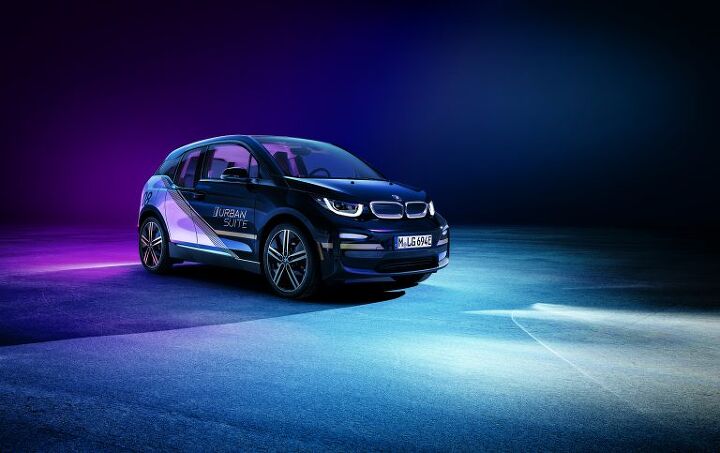



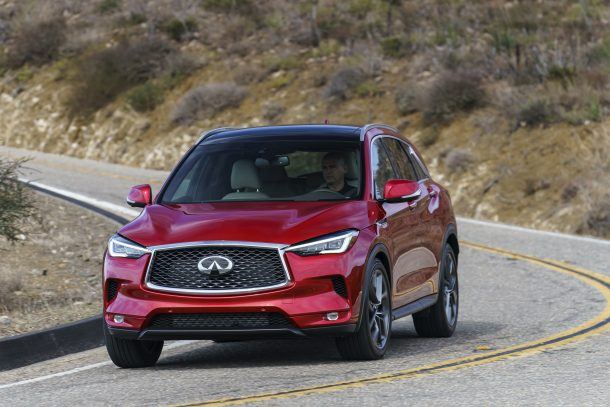
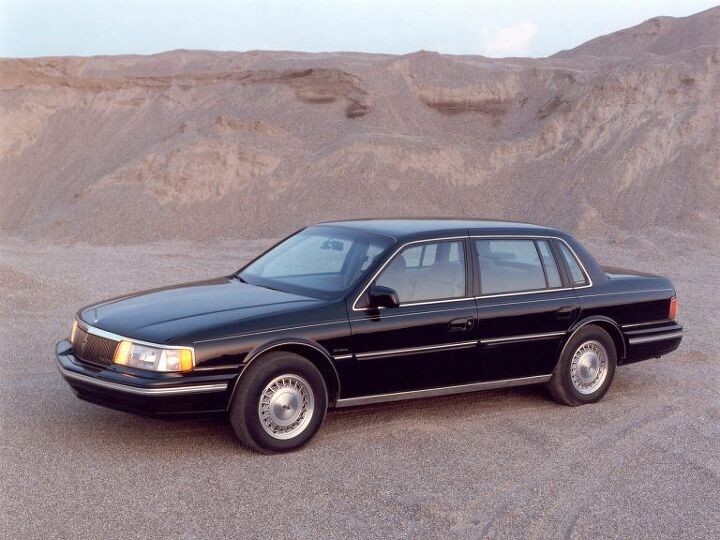










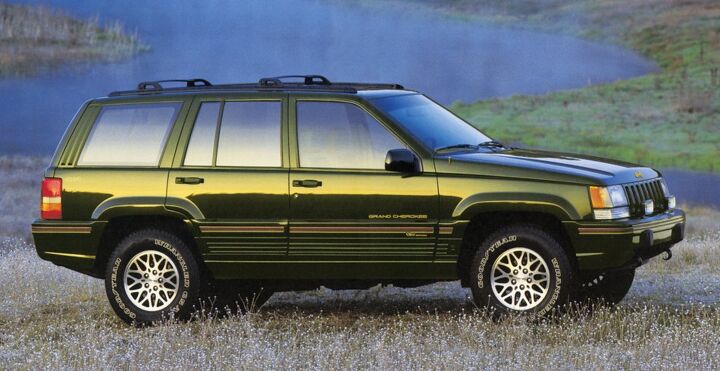






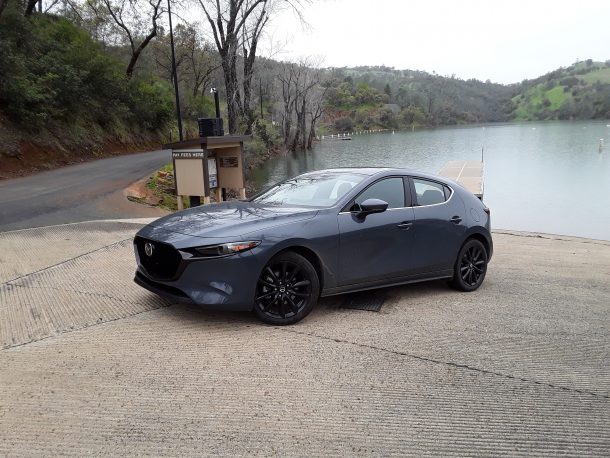



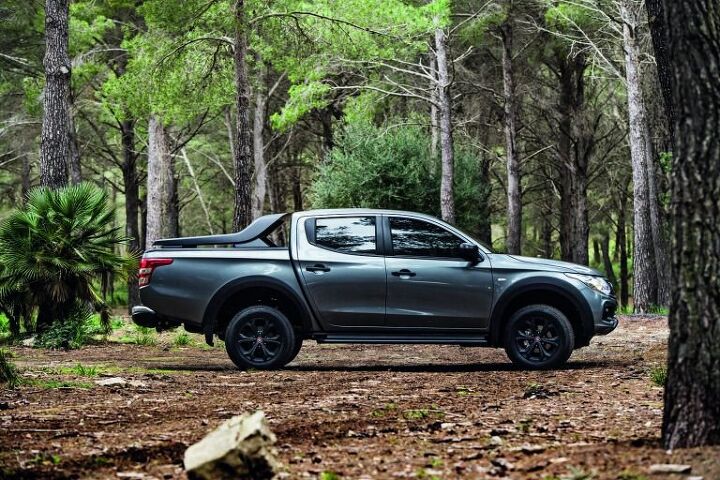


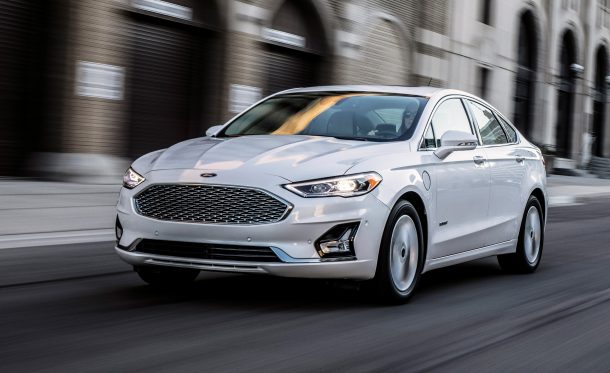



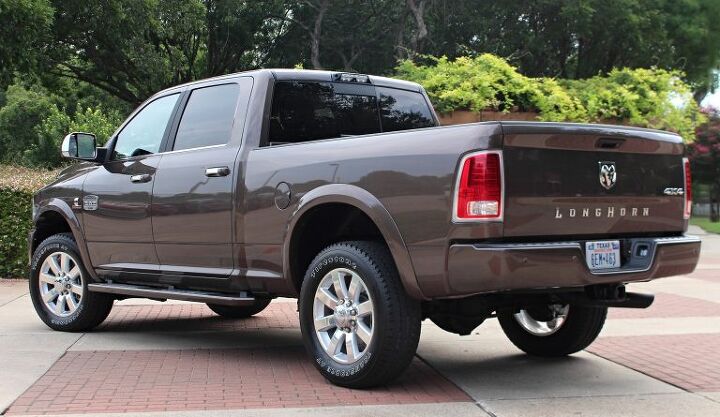




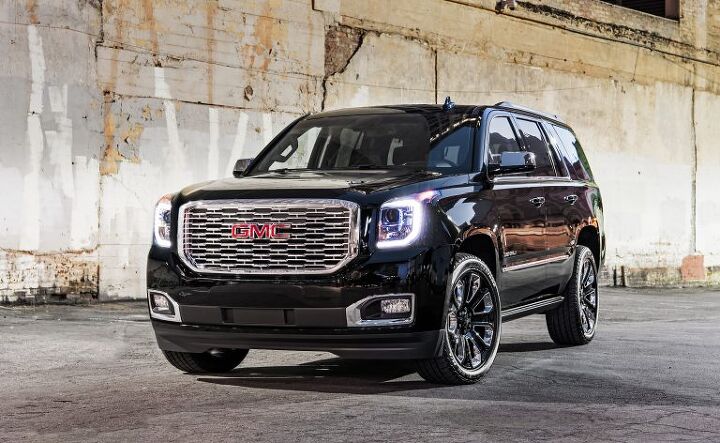


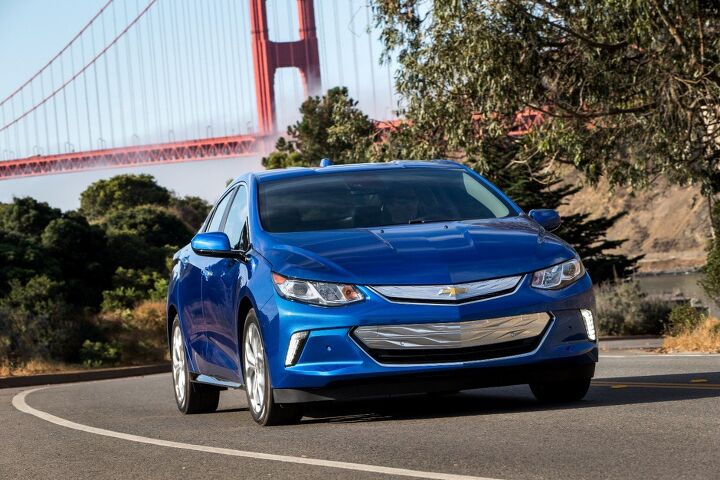




























Recent Comments